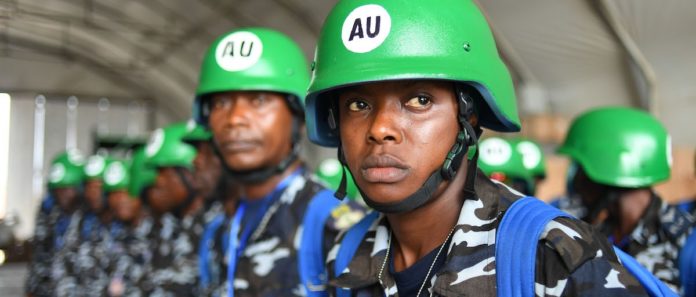Deadline or deadlock? AMISOM’s future in Somalia. Reconfiguring AMISOM would be better for Somalia than the focus on its withdrawal that preoccupies donor countries.
The African Union Mission in Somalia’s (AMISOM) planned transition of primary security responsibilities to Somalia’s security forces is underway. However, its 2021 deadline is unrealistic. Somalia doesn’t have an enabling security environment and its army has limited capacity to sustain the transition due to Somalia’s political crisis, logistical constraints and operational gaps. Somalia’s security must be improved by both enhancing AMISOM and supporting Somalia’s political process.
Introduction
By 2021 the African Union Mission in Somalia (AMISOM) is expected to transfer primary security responsibilities to the Somali National Security Forces (SNSF). This transition is in line with the Somalia Transition Plan (STP) adopted by the Federal Government of Somalia (FGS) in 2017.1 The plan provides for a phased, condition-based transfer of security responsibility from AMISOM to the FGS commencing from 2018 and with an expected completion time frame set for 2021.2
This policy brief explains why it is unhelpful to impose such a deadline on the envisaged transition of AMISOM. Al-Shabaab’s threat has not been substantially degraded. Rather the terror group has adapted its tactics to harm AMISOM personnel, government officials and civilians.
A growing number of other armed opposition groups have also gained momentum as credible threats in Somalia. At the same time, the SNSF remains weak and unable to independently launch, sustain and defend its positions against the threats posed by terror groups and armed opposition groups.
A recent Operational Readiness Assessment conducted by the FGS and federal member states with the support of AMISOM and the United Nations (UN) reported that there were 20 158 biometrically registered forces in Puntland, Galmudug, South West State and Jubbaland. These numbers have not been verified though, and the forces continue to suffer from severe logistical and capacity gaps. An overriding concern is that the National Security
Architecture, the political framework for the establishment of a consensual and inclusive security apparatus in Somalia, remains inconclusive. Tensions between the FGS and the newly constituted federal member states have delayed and could undermine a Somali-led security infrastructure.
This policy brief argues that an interim option to sustain and improve security in Somalia is through the enhancement of AMISOM and the support of Somalia’s political process. Such dual aspirations are mutually reinforcing. Enhancing AMISOM will require renewed regional stewardship through political leadership led by the African Union (AU) and the Intergovernmental Authority for Development (IGAD). It will also require operational enhancement of AMISOM through the reconfiguration of the mission.
This brief provides some reflection on the operational modalities that could improve AMISOM’s effectiveness. The current narrative on transition seems to mask the underlying international quest for a progressive reduction and eventual withdrawal of AMISOM by 2021, which could reverse the security achievements made by the mission over the past 13 years.
Discourse on transition and al-Shabaab’s consistent threat
Attacks by al-Shabaab against AMISOM, the civilian population and other primary targets have remained fairly constant. Based on a randomised sample of attacks
by al-Shabaab against AMISOM troops in the first six months of 2014 and 2016,3 the graph below illustrates how the terror group has maintained a relatively stable pattern and scale of attacks.
Al-Shabaab attacks against AMISOM in the first halves of 2014 and 2016
Source: AMISOREAD THE COMPLETE POLICY PAPER HERE
Dr Jide Martyns Okeke is a governance, peace and security expert. Until recently he was a Mason Fellow on Public Policy at the Harvard Kennedy School and a consultant for the Institute for Security Studies. He previously worked for the African Union and the United Nations Development Programme.






























